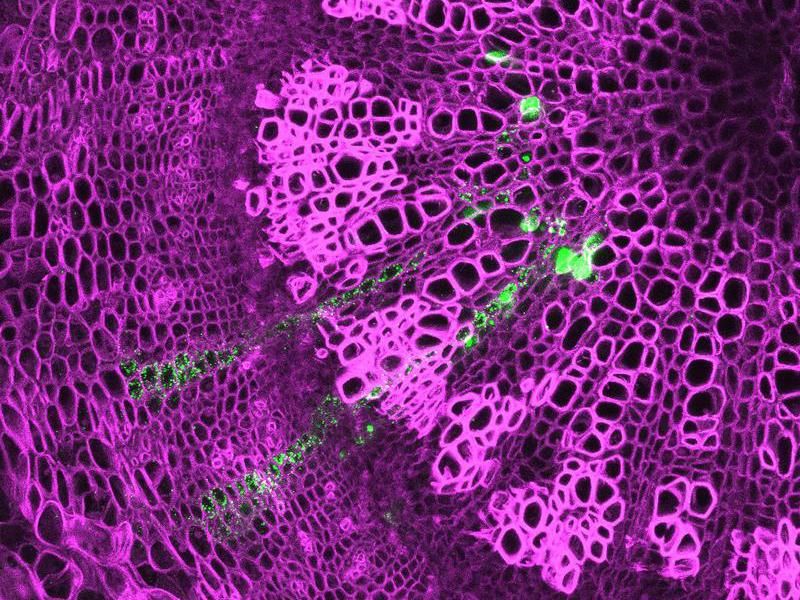Bifacial Stem Cells Produce Wood and Bast
One of the most important growth processes on Earth studied
So-called bifacial stem cells are responsible for one of the most critical growth processes on Earth – the formation of wood. By alternately developing into wood and bast cells, these stem cells are thus starting points for forming wood as well as generating plant bast fibres. A team of researchers under the direction of Dr Thomas Greb, a Heisenberg Professor at Heidelberg University, were recently able to demonstrate this phenomenon using new experimental tools. The scientists from the Centre for Organismal Studies labelled and studied specific types of cells in the growth layer of plants, the cambium.
Life on Earth is fed by energy from the sun. Plants are the primary and most important recipients of this energy, converting it into sugars and biomass that are then utilised by animal organisms and humans alike. The process by which most of the biomass is stored long-term is wood formation. Wood is produced from a thin layer of stem cells called the cambium, which is located directly under the bark of shoots and roots. It produces both wood and plant bast, which is often used in the fibre industry. “Although it has an essential role in the Earth’s materials cycle and supplies important materials for our daily lives, how the cambium functions is largely unknown,” states Prof. Greb, who heads the “Developmental Physiology” research group at the Centre for Organismal Studies.
By labelling different cell types inside the cambium, the Heidelberg researcher and his team identified the cells that are the source of both tissues – the wood (xylem) and the bast (phloem). These bifacial stem cells produce cells bidirectionally, with wood cells growing inward and bast cells outward. To label the stem cells, the team used fluorescent proteins that helped identify the activity of specific genes. Using a molecular “trick”, the researchers were able to firmly anchor the labels in the cells and all their descendants, enabling the team to track and reconstruct cell development over a longer period of time.
By improving their understanding of how these cells work, the researchers hope next to be able to model plant growth and uncover the regulatory mechanisms of cell properties.

Picture of two cell clones (in green), each of which originated from a single cambium stem cell and contributed to both the xylem and the phloem
Dongbo Shi
Original publication
Other news from the department science

Get the life science industry in your inbox
By submitting this form you agree that LUMITOS AG will send you the newsletter(s) selected above by email. Your data will not be passed on to third parties. Your data will be stored and processed in accordance with our data protection regulations. LUMITOS may contact you by email for the purpose of advertising or market and opinion surveys. You can revoke your consent at any time without giving reasons to LUMITOS AG, Ernst-Augustin-Str. 2, 12489 Berlin, Germany or by e-mail at revoke@lumitos.com with effect for the future. In addition, each email contains a link to unsubscribe from the corresponding newsletter.





















































